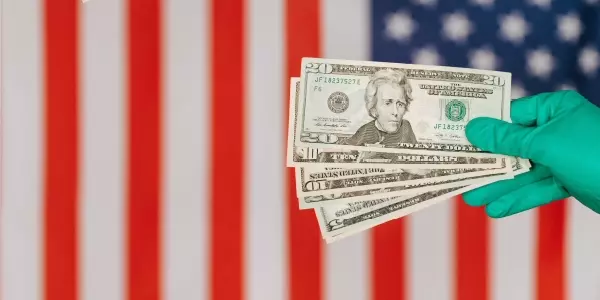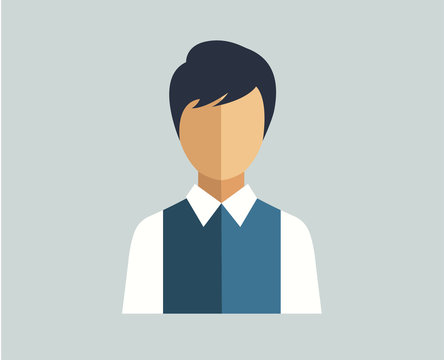
During this pandemic situation, many industries have shut their doors due to the economic crisis, falling demand, and reduced revenue. Every industry lives on its core revenue-generating factor, that is consumers. So, due to the mass infection and lockdown, industries have lost their consumers. This is why the companies have closed themselves, and as a result, many employees have lost their jobs.
So, naturally having $1000 extra in your pocket will be quite delusional during this economic crisis, where you may need to struggle every day for managing household budget due to lack of finances.
So, where does this $1000 come from? Let me explain.
This Coronavirus Aid, Relief, and Economic Security Act (CARES Act) was signed by President Donald Trump in late March to provide one-time checks of $1,200 to adults below certain income levels. Apart from that, kids also get $500 under this act.
Basically, the federal government has provided a massive $2.2 trillion stimulus bill to the needy citizens of our nation. The first batch of stimulus checks are distributed to millions of US people as a part of the expanded unemployment benefits, from 15th April 2020. These have also provided relief to small business owners to sustain the impact of the COVID - 19 outbreak. It is expected that the second batch of stimulus checks wouldn't go out until after the election.
So, if you are one of those lucky people who have received the first stimulus check a little late, or you are waiting for the second batch, then you have one important question in front of you - What to spend on that extra $1000 now? Should you pay off debt? Or save that money for retirement? Would it be a wise decision if you spend that money on home repairs, or creating an emergency fund? Let us discuss how you can spend your money.
Best ways to spend $1000 received from the stimulus check
Many experts might suggest different ideas to spend extra dollars from the stimulus check and get financial freedom. These are the things to spend money on if you have an extra $1,000.
a) Pay off your priority debts first
It is wise to spend any amount to pay off the debt at any time. Paying off your high-interest debts, especially credit card debts, is one of the most impactful options to tame your overall debt. Many personal finance experts may advise you to use the extra $1,000 to pay off the highest APR credit card balance first, as it would save you a good amount in interest overall.
But, the issue you may face is that $1,000 isn’t practically enough to get you out of your credit card debts. According to the credit bureau Experian, a normal consumer or borrower has 4 credit cards on average, and the average balance on a credit card is nearly $6,200.
But you may release some pressure from your shoulder by using that $1000. You may select the highest interest rate credit card debt and make an extra payment to pay off that debt.
You may also list up credit card debts from lowest balance to the highest. Then you may start paying off credit card debt from the smallest debt balance. Many experts believe this debt payment strategy or debt snowball strategy boosts faster debt relief. For consumers who want to reduce the number of credit card debts asap, the debt snowball strategy is surely useful for them. This strategy is focused on paying off the smallest debts first, so the number of credit card debts can be reduced faster. Apart from that, if a consumer wants to reduce their debt along with saving more on interest payments, then the debt avalanche method is best for him/her. This method particularly targets highest interest debts first. As a result, a consumer can pay off debt as well as save more from overall payments in the long run. It is up to you, which strategy you choose, debt snowball or debt avalanche, to handle your debts.
Another high-interest debt is payday loan debts. This is much more dangerous compared to credit card debts as the rate of interest is too high, almost 300% to 330%. Also, payday loans are short term cash loans that can easily increase your debts by adding up the unpaid interest charges.
So, if you have $1000 extra in your hand, try to consider payday loan debts as one of the things to spend money on.
An extra $1,000 can also be useful to pay off our student loan. The government has suspended student loan payments till Sept. 30 under the CARES ACT, as well as the interest for that period. It's a chance for the millions of student borrowers to get out of student loan debt.
So, it is clear that paying off debt is the best way to spend $1000.
b) Put the money into a savings account
As per Laura Davis, a certified financial planner with Cuthbert Financial Guidance in Decatur, Georgia - "While this sounds completely unsexy, the best thing that the majority of Americans can do with $1,000 is put it into a high-yield savings account."
It is quite reasonable that you may want to put that extra $1000 into a high-yield savings account. Practically, a high-yield savings account may give you 1.30% interest compared to a non-high-yield savings account, which may give you 0.01%.
So, it will be a wise decision to save your $1,000 in a high-yield savings account, next to paying off your debt burden.
c) Create an emergency fund for you
If you haven’t created an emergency fund for unexpected expenses, this is the time you should think about it. If your credit card debts or other unsecured debts have been paid off, then you may create an emergency money source to handle financial issues at any point in time.
Experts would suggest you save at least three to six months of living expenses in an account that can be easily accessible. You may save that money in government-insured savings or your bank account, except your checking account.
This emergency fund will come in handy if you face sudden unemployment or require a good amount for emergency purposes. Try to keep that extra $1,000 intact; it will give you the peace of mind that you have something to cover you up during a financial crisis.
d) Invest for retirement
Whenever you think about what to spend $1000 on, you should always consider putting money on your 401(k) and an IRA. Adding $1,000 to your retirement investments will be a smart choice if you are done with paying off credit card debt, or boosting your emergency fund. Once you invest that $1000 for the next 20 or 30 years, that money could grow into a big amount.
Studies show that a majority of Americans do not save properly for their retirement. If you’re one of them, then this is the best time to spend $1000 on boosting your retirement benefits. You may also suggest this strategy if someone asks you about how to spend 1000 dollars now.
e) Spend $1000 towards the mortgage payment
If you are thinking about what to spend $1000 on, as you paid off your debts and other stuff, consider putting $1,000 for a mortgage payment. You may also start refinancing your mortgage with that $1,000, but it can cost you more later. So, decide after analyzing your financial condition.
Due to the current situation, mortgage rates are currently at an all-time low. If you choose the refinance option, you may pay the thousand dollars upfront, after considering your mortgage balance and current interest rate. Over the long run, you may save a good amount if you can reduce your current interest rate by 1% or more.
f) Invest in your kid’s 529 account
If you have kids who will join college next year, you may invest that $1000 into your kids' savings for their college fund. Consider adding that money to 529 college savings accounts for your kid. These accounts work like an IRA for education expenses for your kids. So, it will be an easier way to save for future college expenses. In many states, the minimum contribution to a 529 account is only $25 per month. So, you may open more than one 529 accounts, if you have more than one kid.
This will be a good choice if you think about what to spend $1000 on, after meeting all your other priorities.
Conclusion
These are the 6 ways to spend $1000 from your stimulus check, listed on the basis of priority.During the pandemic, it is important to track your every dollar and spend it wisely. So, do not make any financial decisions based on urgency or emotion, or excitement. Think, plan, and then execute your every financial move for a better outcome.
With proper help you can
- Lower your monthly payments
- Reduce credit card interest rates
- Waive late fees
- Reduce collection calls
- Avoid bankruptcy
- Have only one monthly payment
